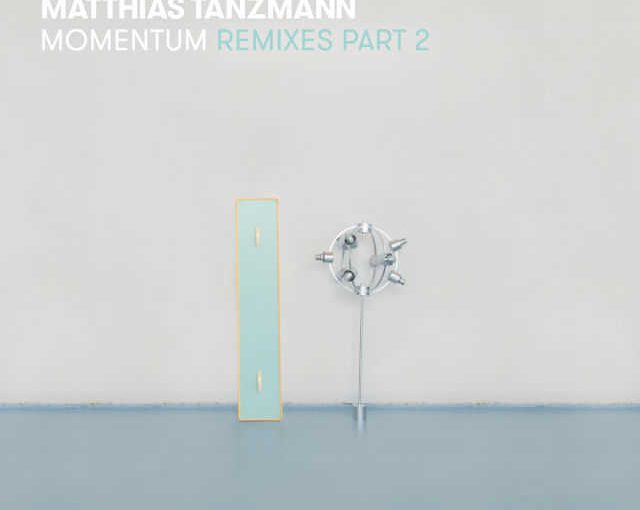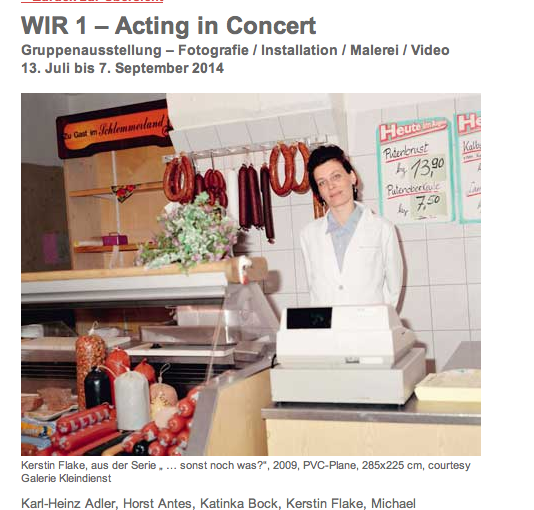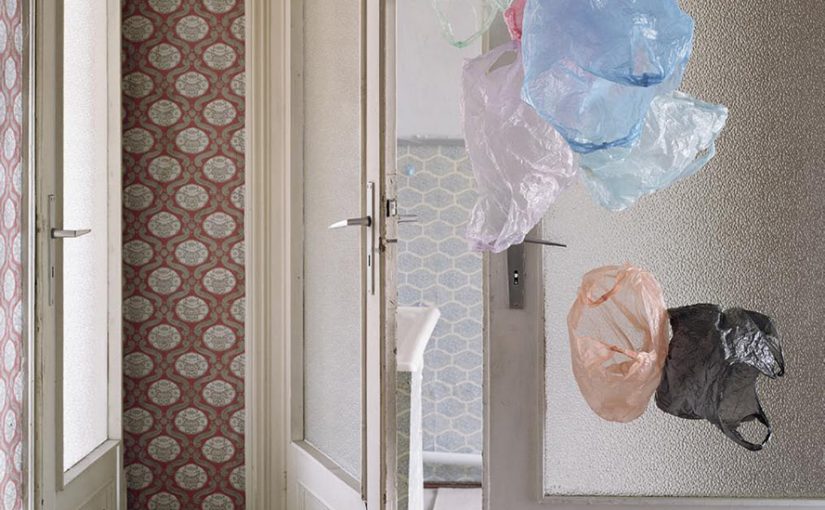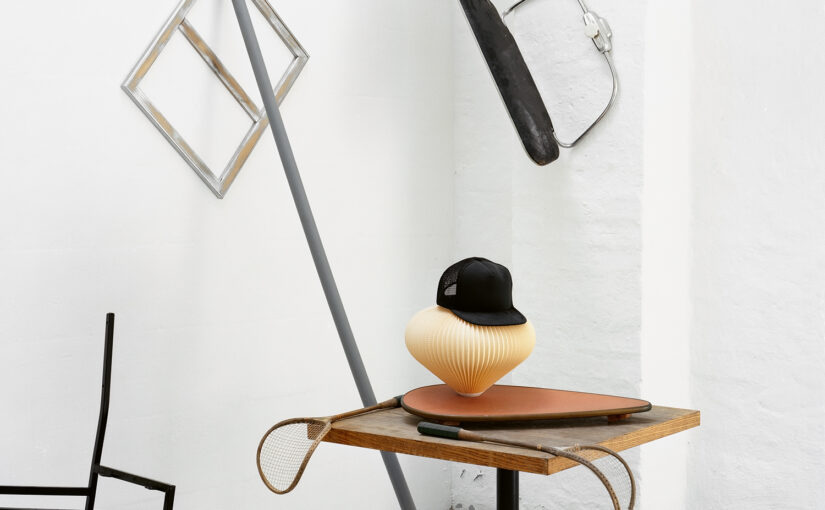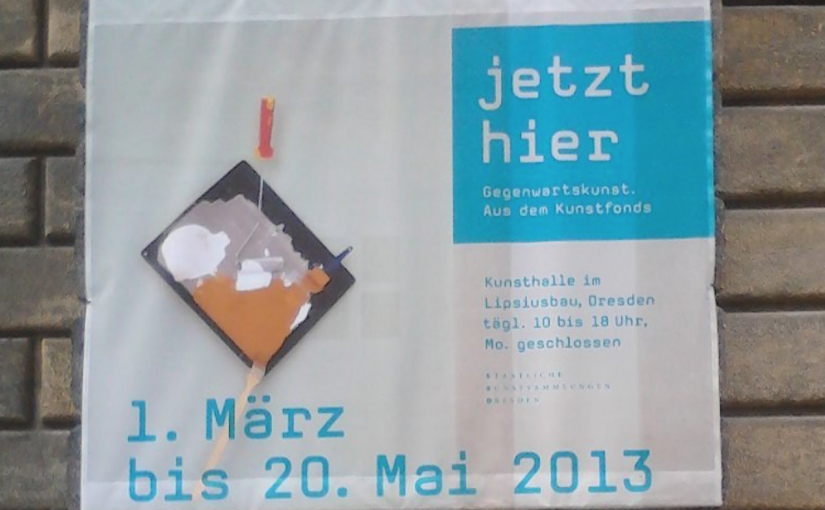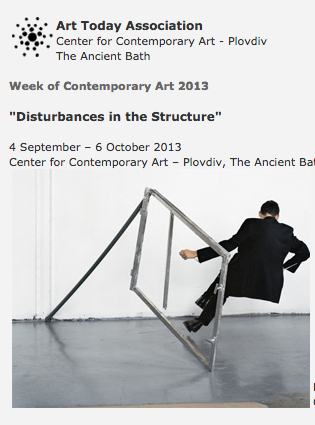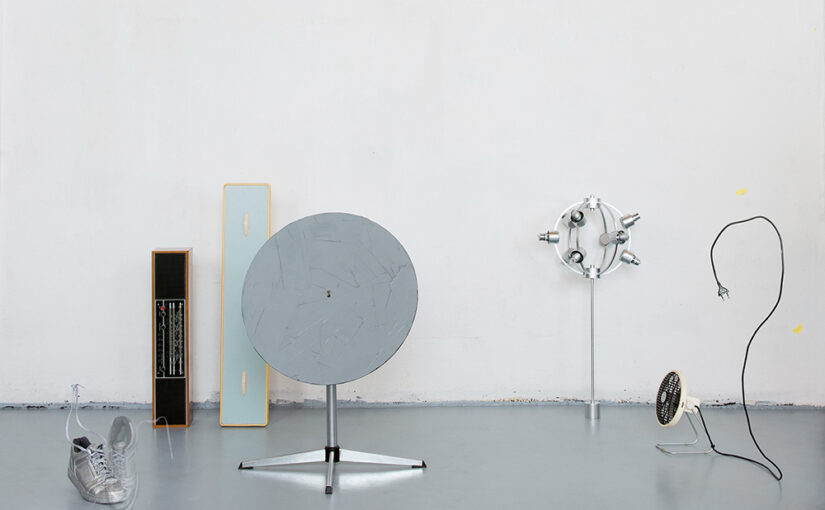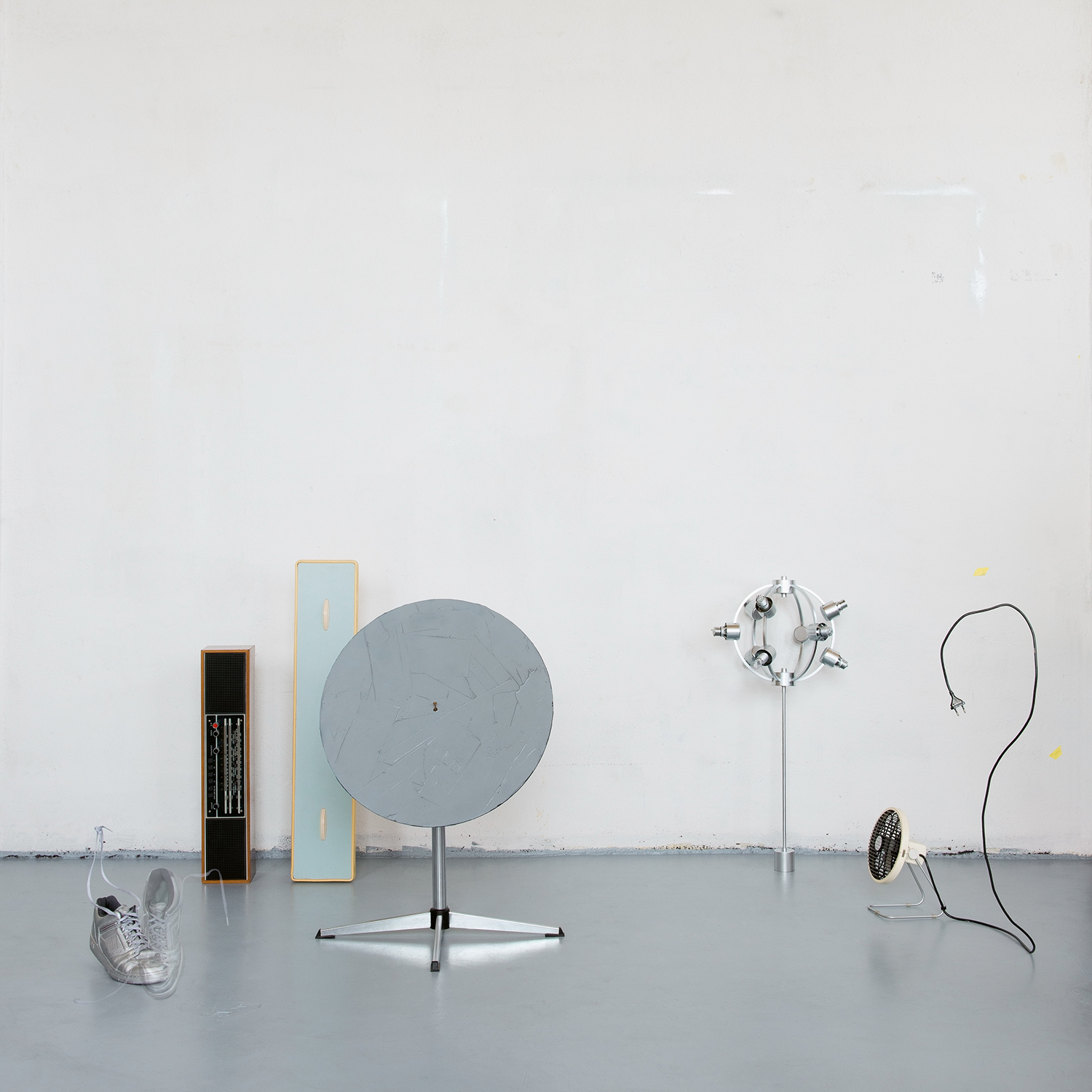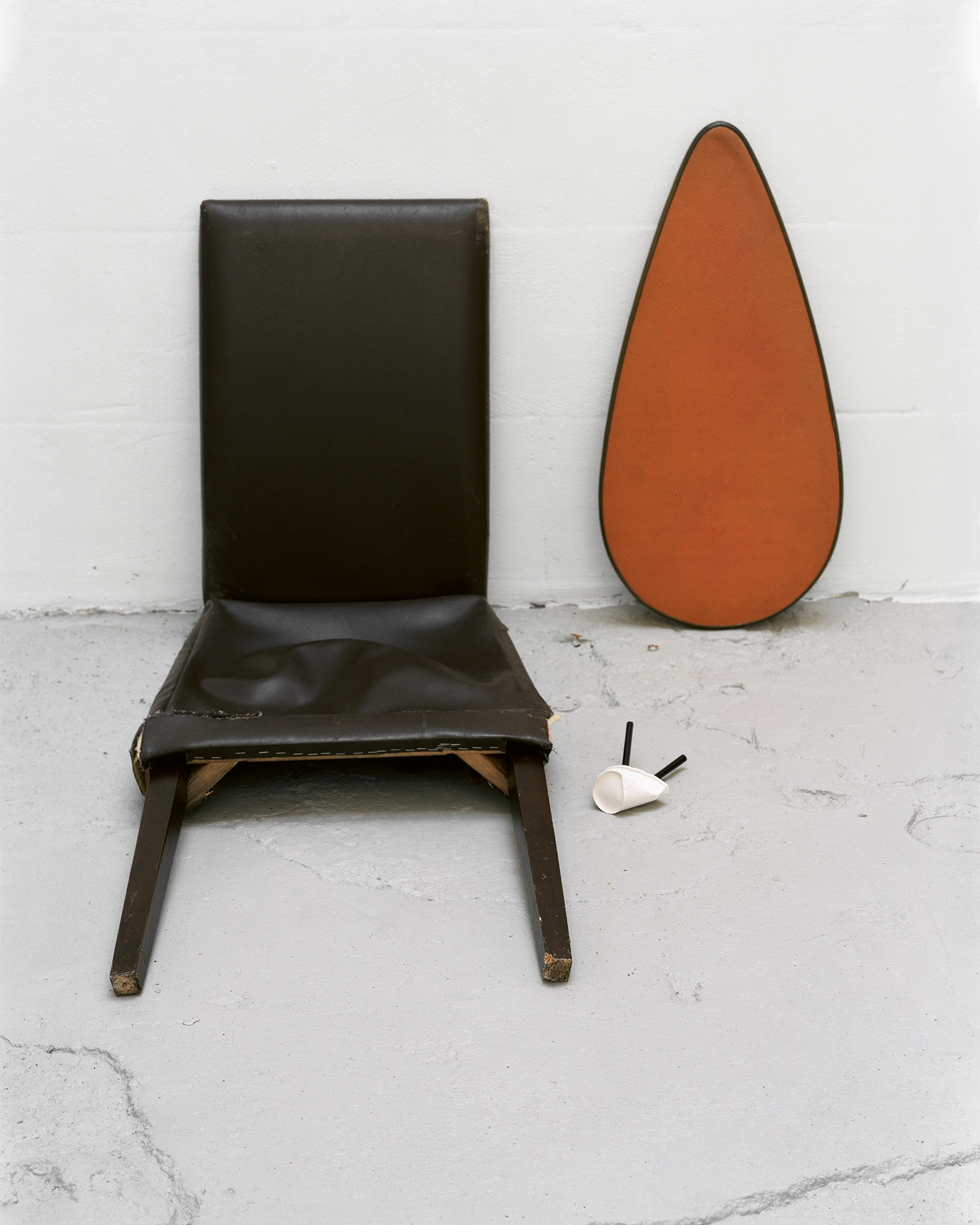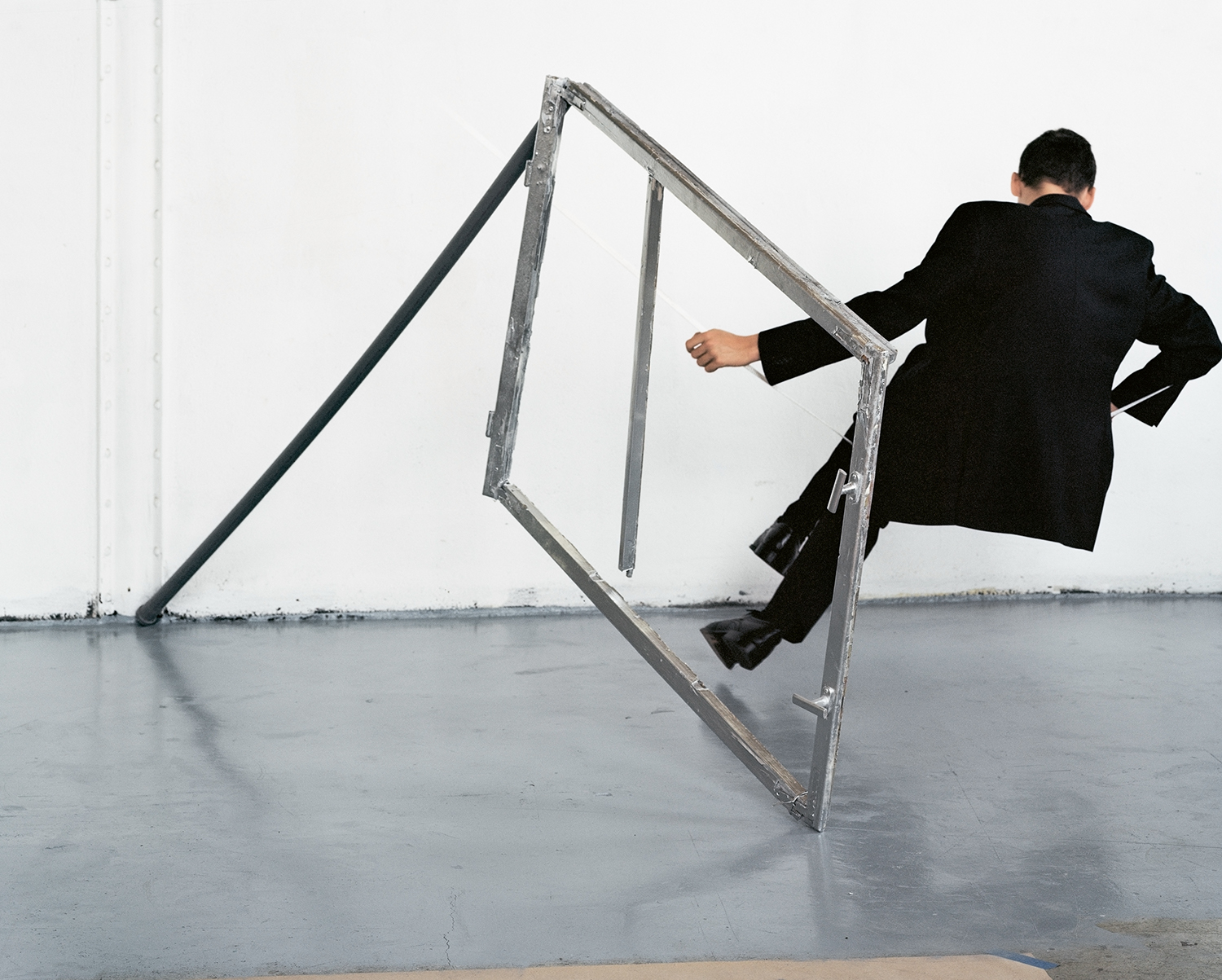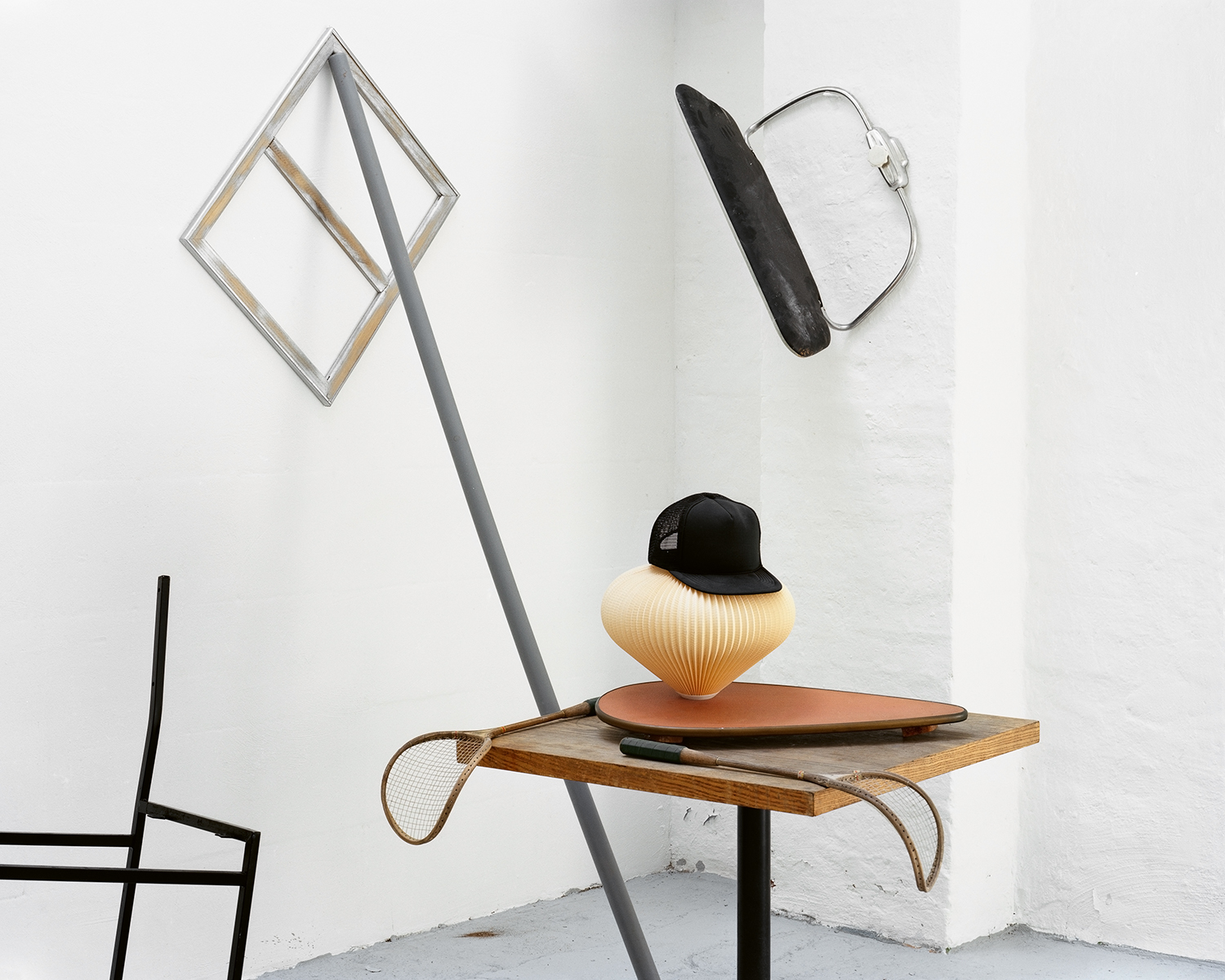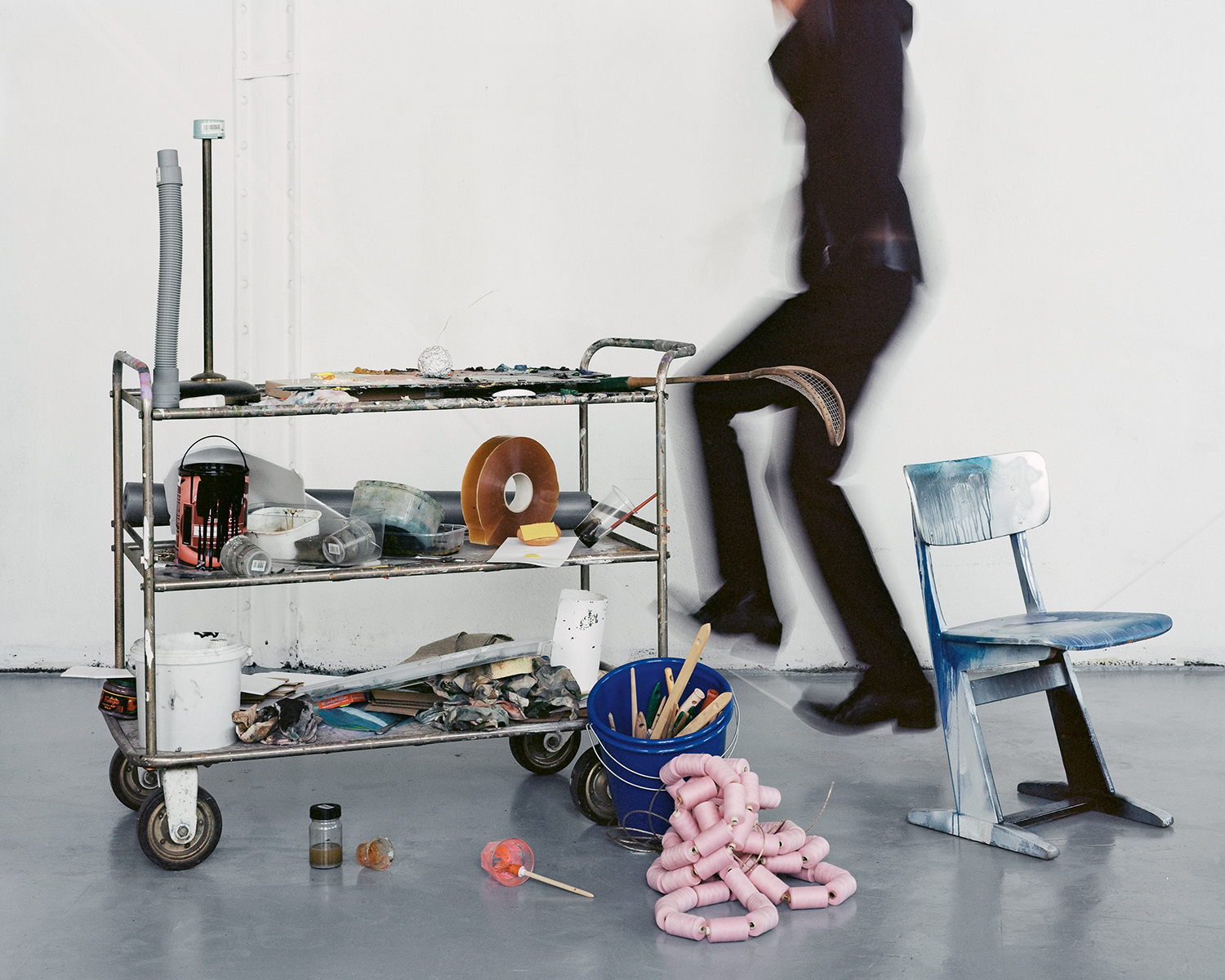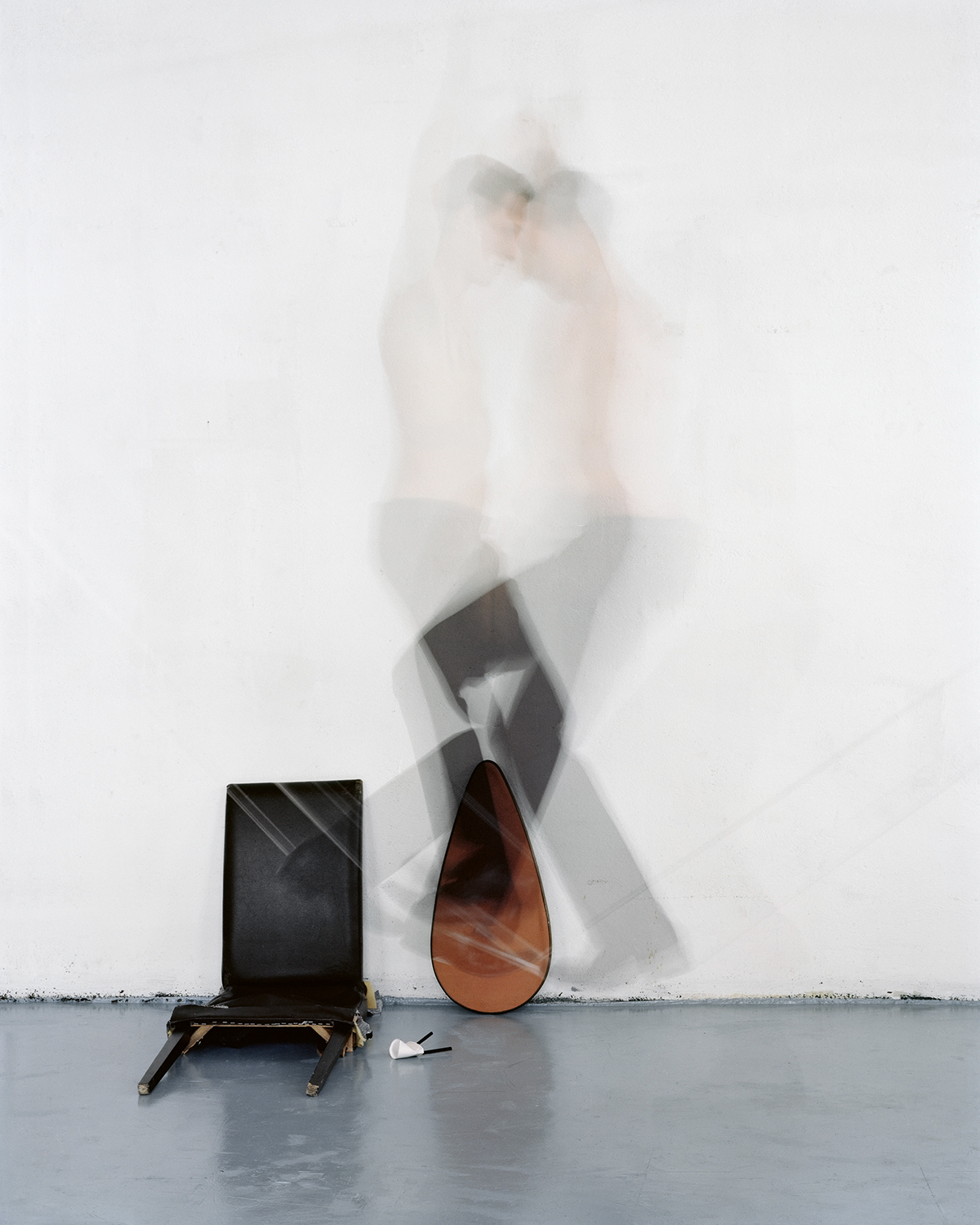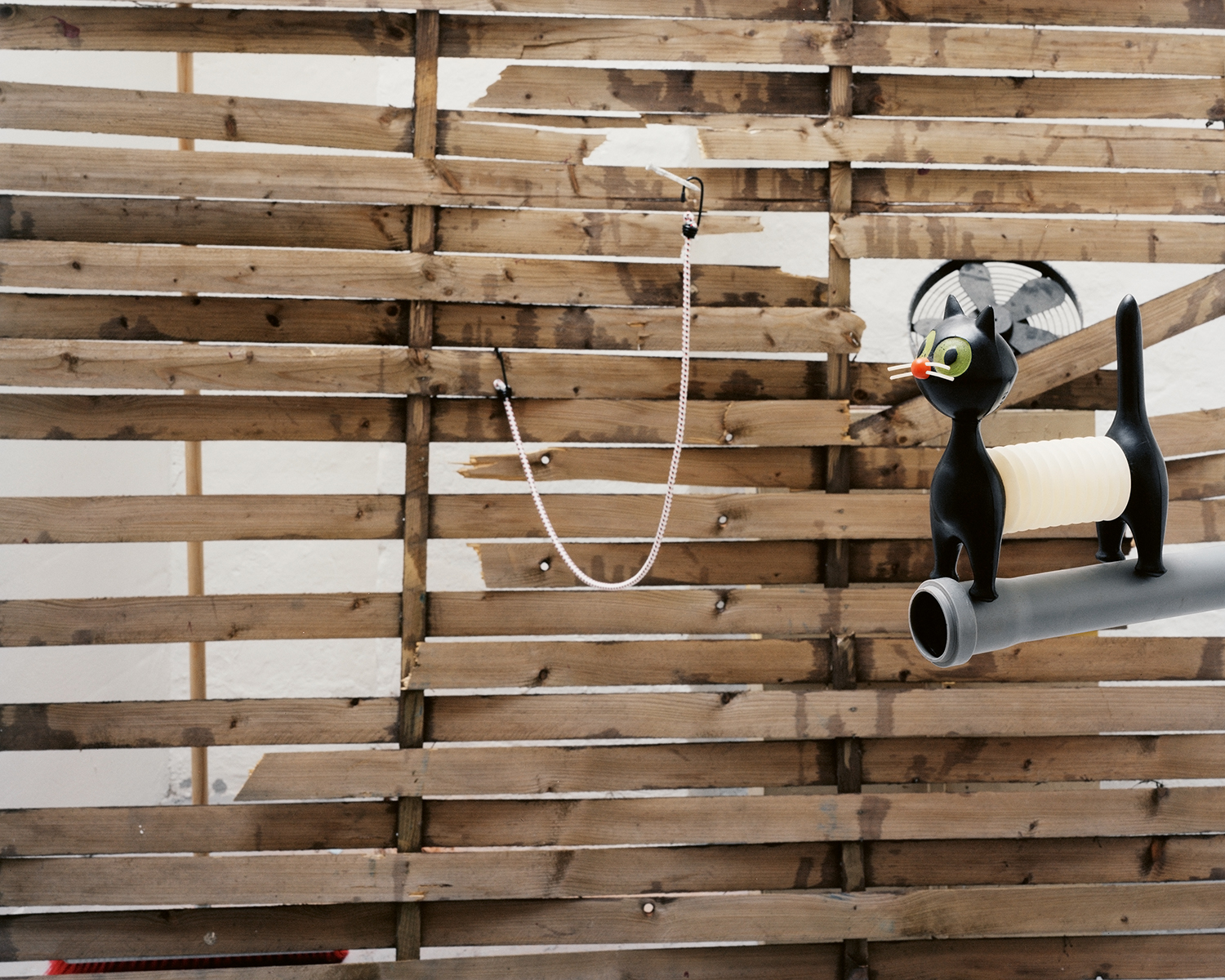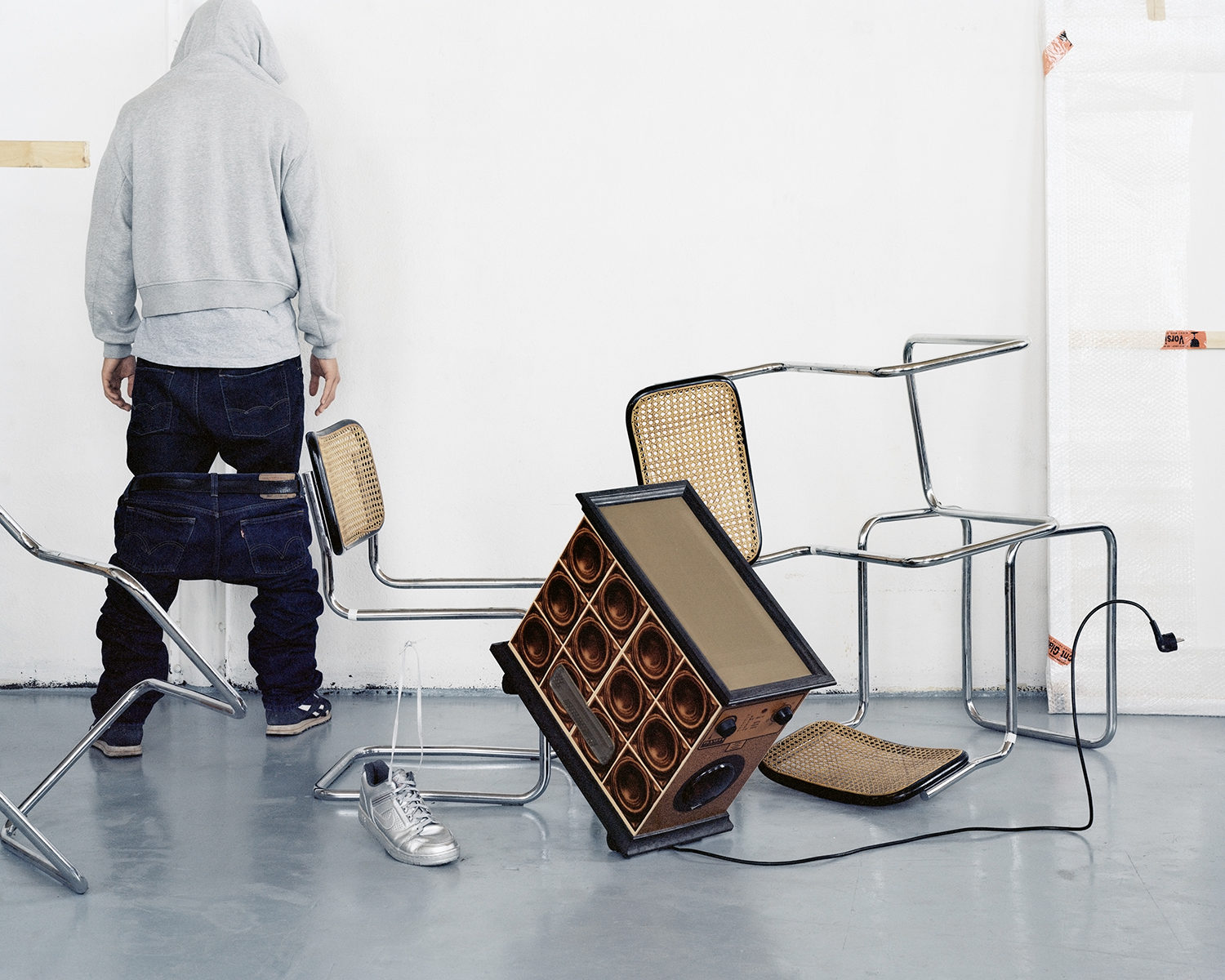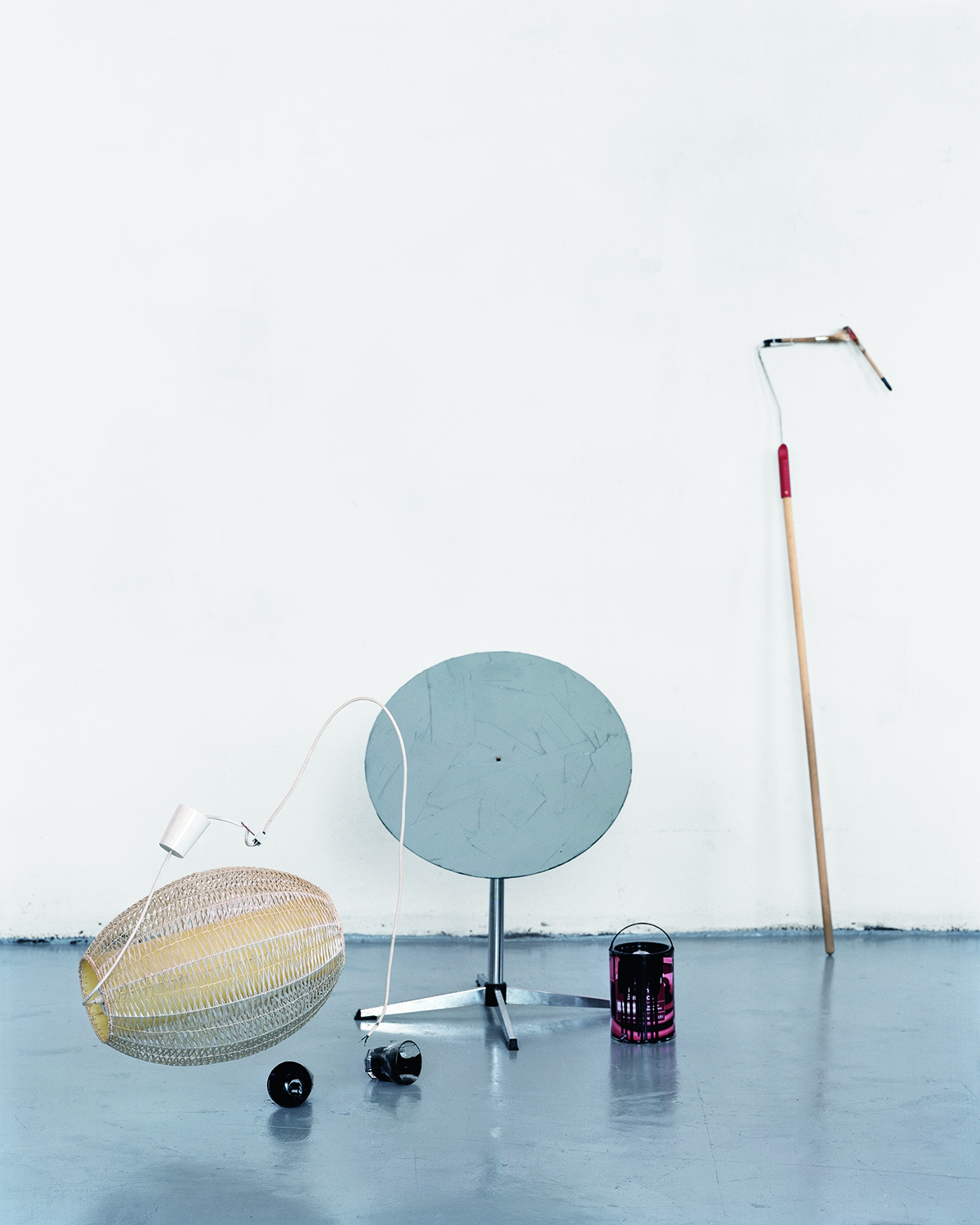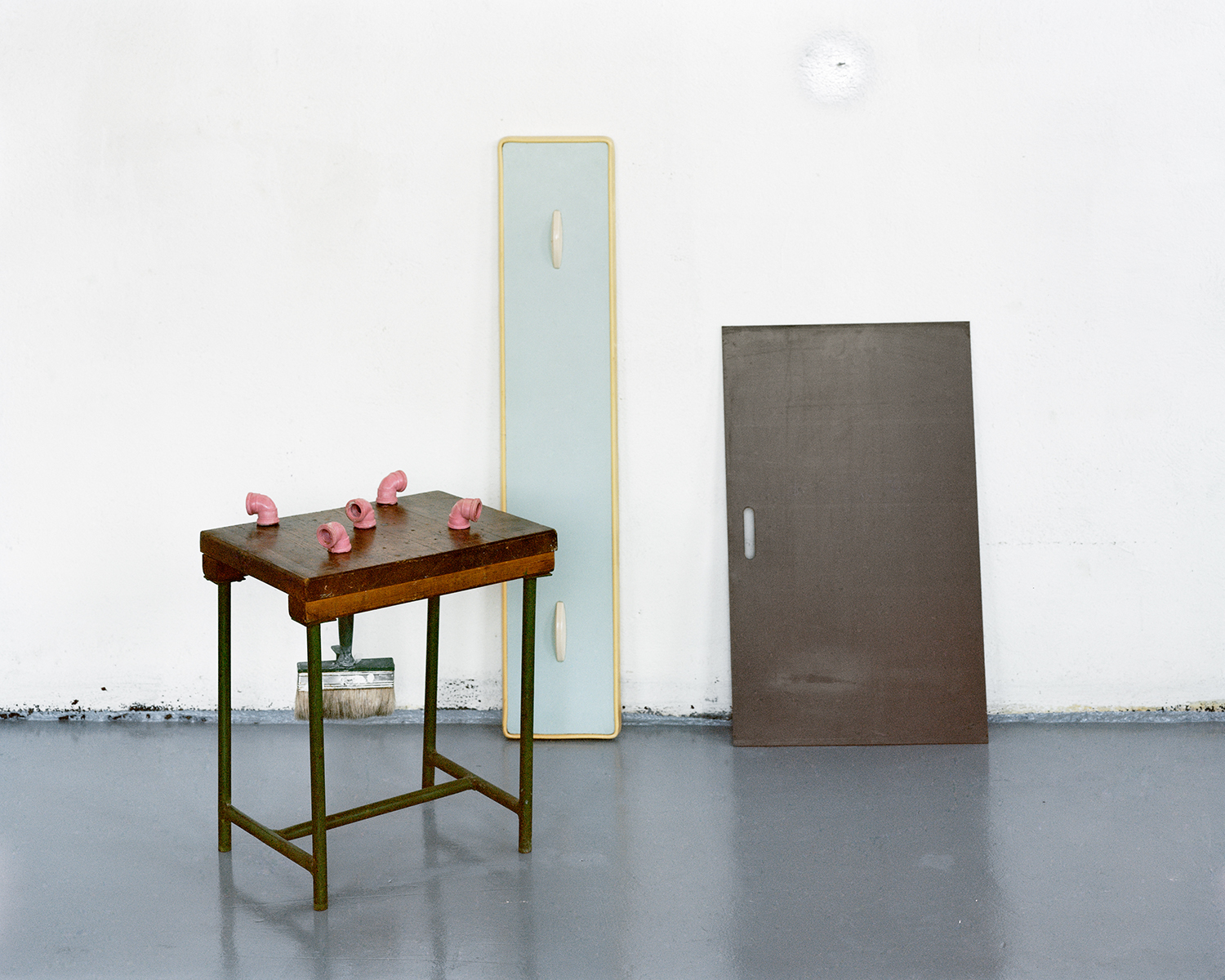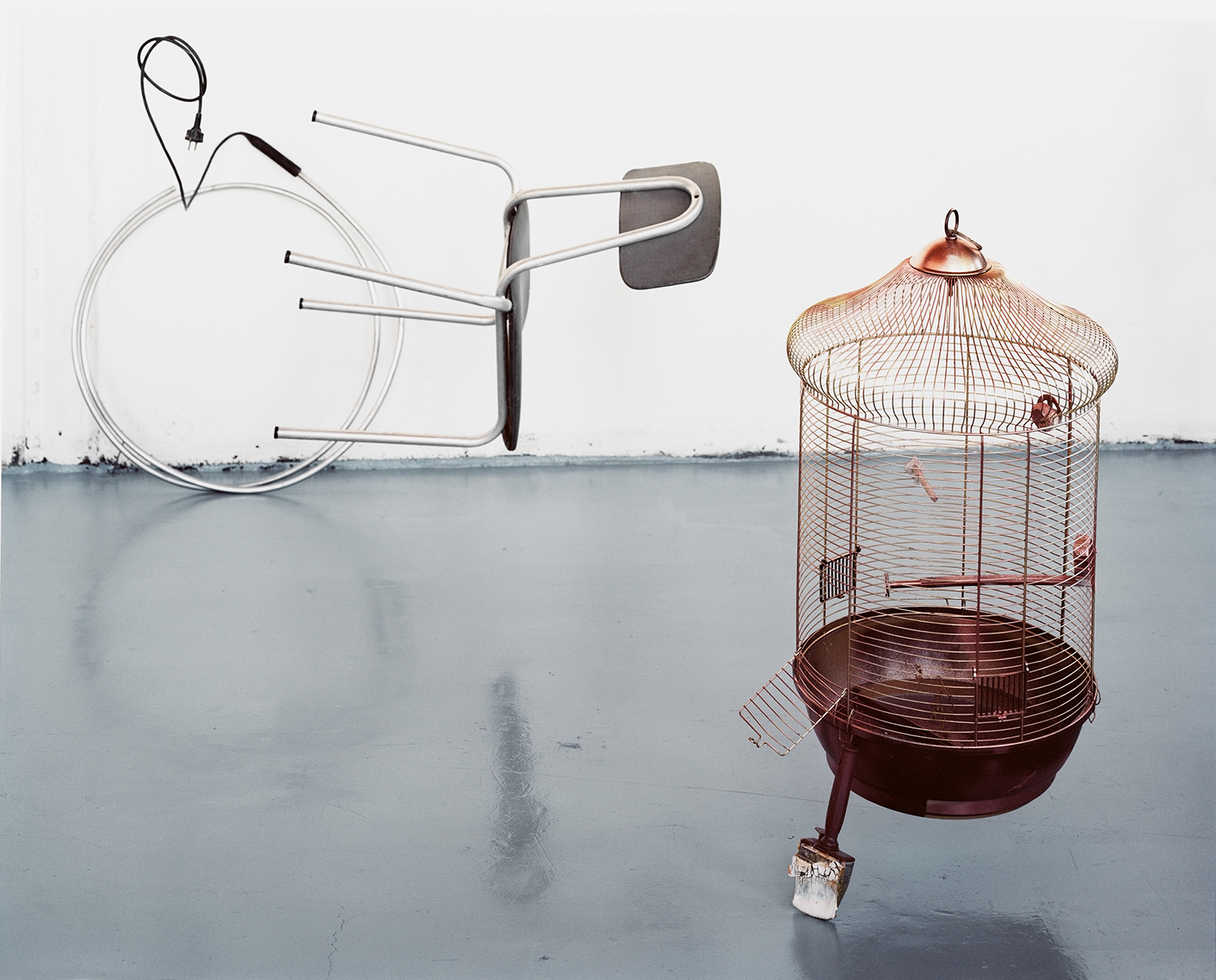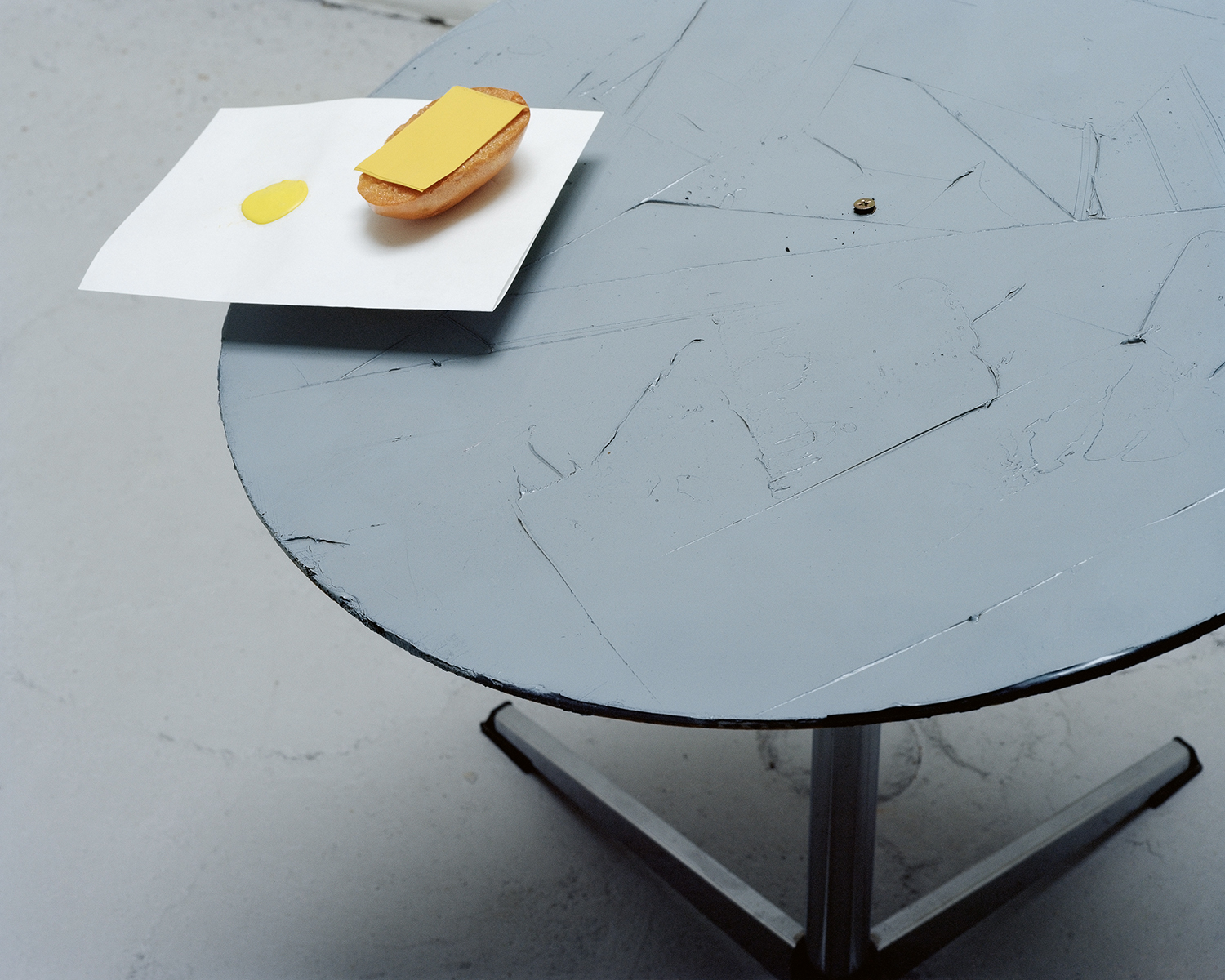by Bettina Reichmuth
Just before you awaken, an idea, a fleeting image sometimes passes through your mind, half in a dream, half linked to reality. Carried by fantastic frequencies, things enter your head, without thinking. A resourceful, time-less moment. Kerstin Flake’s new photographic work running out is suspended in a state like this, between waking and sleeping, fiction and documentation, past and present.
East Germany. A deserted industrial building, storage space for history since 1895. The old routines of the workers have been declared dead; all time windows have been closed. In accordance with her characteristic way of working, Flake uses these unoccupied spaces to create time-space-structures in which physical laws no longer play a role, where purposelessness reigns. Using a plate camera, she then transfers her temporary installations onto the surface of the photographic image. To this end, she does not isolate her motif in order to “capture“ it. She enters the abandoned rooms with the purpose of liberating the found objects from their former functional contexts.
They have been waiting there for an indefinite period of time: workers‘ trousers, boots, brushes, tables, oil cans, baseboards, paper bags. Kerstin Flake searches for resonances to make the rooms vibrate and bridge the gap between epochs. What potential is hidden in the material lying around here, which direction do all the casting moulds aspire to take? Flake takes stock, collects, arranges, installs, combines, finally lets the relics of the past float in fake stills, parade, dance a vibrating twist.
However, the tension of Flake’s photographs arises only in part from the deceptive staging of weightless objects. The way in which they break away from old patterns of order makes it impossible to overlook how, through the passage of time, new worlds can arise in the same spaces, and how this distance is simultaneously fixed in the picture: “… the Surrealists misunderstood what was most brutally moving, irrational, unassimilable, mysterious—time itself.” (Susan Sontag).
Kerstin Flake’s photographs make the disturbing moment of transience productive, they begin with the end. Photography itself is exhibited as an open medium with hyper-realistic potential: the point where reality ends is where photography is able to leave its frame.
A woman seems to have been left behind in these old factory workshops. A surrealistic muse, a ghostly secretary or perhaps just a visitor from the present? She lies dreaming between inoperative machines, then emerges, „ad acta“, between papers and folders. A gust of wind passes through.
Bettina Reichmuth
